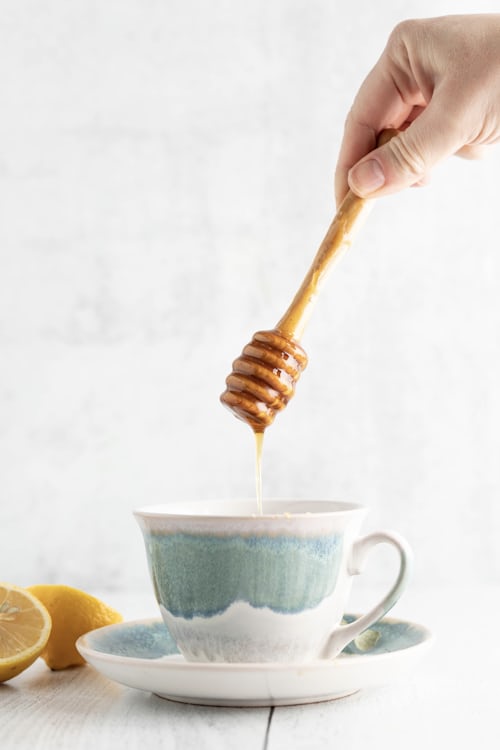Beekeepers use many different tools and protection when they work with their honeybees. All items have an important role to play when beekeepers tend to their hives.
Beekeepers wear a special uniform called a beekeeping suit. With that suit connects a face and head covering called a veil. This is worn so that honeybees can stay away from their face, making it easier for them to work, and have a less likely chance of being stung. They have an option to wear gloves over their sleeves, to prevent being stung on the hands. If beekeepers are comfortable enough, some do not enjoy wearing gloves, because they know that honeybees are gentle, and they find it easier to work in the hive without the extra fabric of the gloves covering their hands. The suit is designed to zip up across your abdomen and chest, and zip around your neck. The ankle and wrist parts of a suit are cinched, so no bees may get in through those areas.
Beekeepers use what's called a hive tool in the hive, to separate sticky frames, removing the top of the hive, and pulling frames up when they are stuck. A hive tool almost acts similar to a crowbar. Between honey and propolis, everything may stick together, and to separate everything in a calm, gentle way, it's difficult to do so with just your hands. Hive tools get the job done, and some beekeepers discover their own different ways they may use them other than prying sticky substances apart.
Smokers are a very helpful tool for beekeepers. Smokers have two different parts, the chamber and the bellows. The chamber is where a beekeeper will start a fire using anything dry and flammable, such as leafs, rope, boxes, egg cartons, etc. After fire is going and a good smoke is produces, beekeepers will cover the chamber with the spout lid. The bellows is squeezed to push smoke out of the chamber. Beekeepers use the smoker in the front of the hive, and at the top, after the hive top is removed to check bees. What the smoker does is it tricks the honeybees into thinking there is a fire. They then will eat honey and become tired, and go to the bottom of the hive and calm down. This helps the beekeeper look at frames and make sure everything is going smoothly, without having all of the honeybees at the top of the hive or piled on the frames.
Just like any career, beekeepers always come prepared in a uniform and have special tools they use to get the job done!











